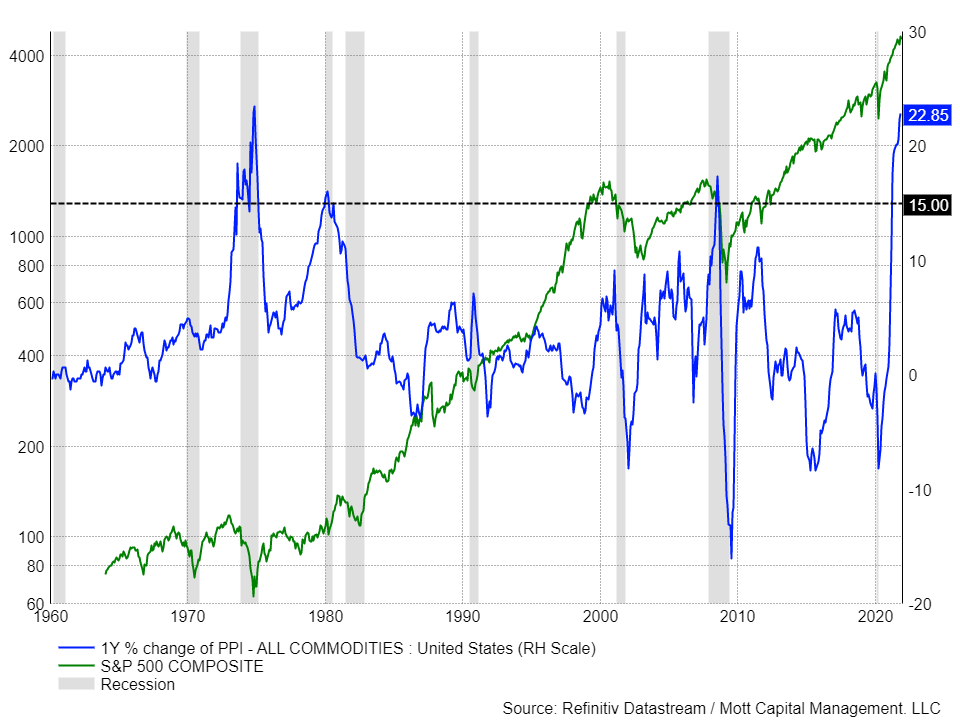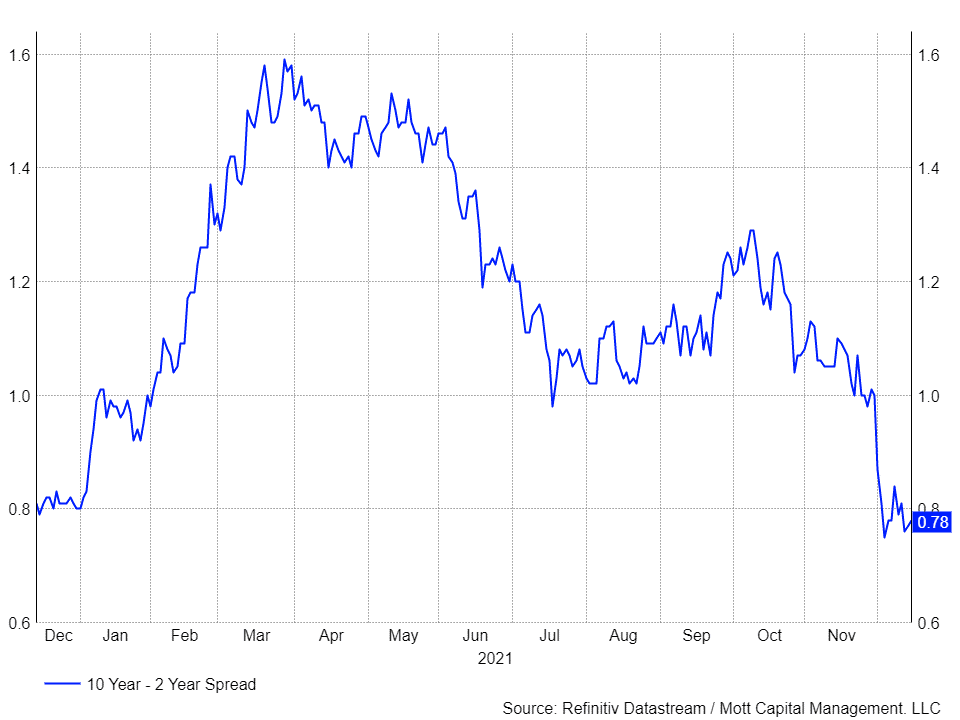This article was written exclusively for Investing.com
If the latest reading from the Producer Price Index by Commodity is a good predictor of the future, then a recession may be in store for the US economy, and very soon. The index showed that prices in the US rose by 22.8% year-over-year in November, its highest reading since November 1974 when it reached 23.4%.
Since 1960, this index has only risen above 15% on three other occasions,1973-74, 1980-82, and 2007-08. There was a US recession and massive drawdowns in stock prices each of those times. For example, the S&P 500 peaked in January 1973 and didn't bottom until October 1974 and fell by nearly 48%.

In 1980, inflation again took hold of the economy, with the PPI peaking at 16% in February. Stocks didn't peak until November and didn't bottom until August 1982, falling nearly 25%. That period saw two recessions, one in 1980 and another in 1981 through 1982.
Inflation started to spiral in 2007 and peaked with a 17.4% year-over-year gain in July 2008. This spike in inflation resulted in the financial crisis, with the S&P 500 peaking in October 2007 and bottoming during March 2009, falling by roughly 56%.
While it may be impossible to fathom that a recession is around the corner as the PPI currently predicts, the bond market may also be suggesting one is coming. One needs to look at the bond's yield curve, which shows that the curve's steepness has flattened over the past few months, with the short end of the curve rising and the long end of the curve falling.
Since October, the spread between the 10-year and the 2-year has declined by approximately 50 bps to 80 bps. The yield curve flattening is due to the 2-year rising and the 10-year falling. The front of the curve is pricing in rate hikes by the Fed, while the back of the curve is pricing in slower long-term growth.

Additionally, breakeven inflation expectations have fallen in recent weeks. The 5-yr breakeven inflation rate has fallen to approximately 2.65% as of Dec. 15 from around 3.25% in the middle of November. The sharp decline in inflation expectations suggests that high prices could slow growth in the US economy enough that inflation cools.

In both cases, the bond market doesn't seem to have a lot of confidence in the future health of the US economy. Only time will tell, but there may be hope on the horizon. Prices in many commodities have fallen sharply throughout the month of November and may begin to register negative readings in December. Oil has dropped by nearly 15% since its mid-November peak.
Even if inflation rates begin to fall, it may be too late, with the damage already being done and prices now at elevated levels. Hopefully, history won't repeat itself this time around, and the PPI index has it all wrong.
We can hope.
